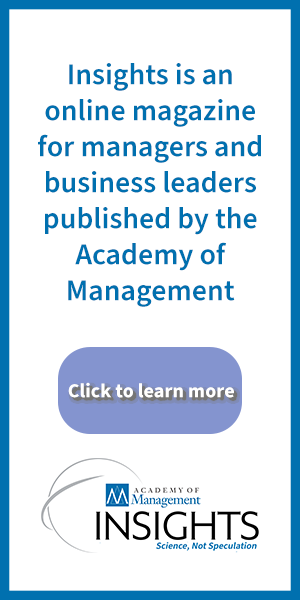Published on: July 8, 2025 at 3:57 pm
Conducting regular employee surveys is a best practice that leads to better engagement, morale, retention, and productivity. But it isn’t enough to simply collect responses, according to Academy of Management Scholar Quinetta Roberson of Michigan State University. It’s important for leaders to actually listen to respondents’ thoughts and feelings and take action to correct problems.
Roberson said that she was working with a large organization as a diversity consultant to develop a strategic plan and objectives. A key step was to collect feedback from its employees, some of whom were ringing alarm bells.
“In their employee survey, they had people who were talking about interpersonal incidents with their coworkers, and they felt bullied and harassed,” Roberson said. “Particularly members of certain groups didn’t feel a sense of belonging and would project that they only had a year left in the organization.
“And so I said, ‘That is really bad; we’ve got to address this … let’s talk about how to address this problem that people say they felt bullied and harassed,’” she said. “I didn’t say this as my own personal opinion; I was literally looking at the responses to their employee survey.
“And they said, ‘We don’t want to say that because it might make other people feel like they are harassed or bullied, and so their whole communication approach was to say, ‘We’ve got some good stuff going on, but we don’t want to talk about the bad stuff.”
While focusing on the positive is an understandable impulse, by not prioritizing the negatives, leaders and managers miss opportunities to make improvements that boost employee engagement, morale, retention, and productivity.
“It isn’t easy work to do, but if you put in the time and the investment, it also isn’t rocket science, so people have to be willing to do the work and get into the stickiness of it,” Roberson said.
“That’s the kind of conversations that I have, because if they’re not willing to do that hard work of thinking about ‘What do we do to fix our problems? What should our goals be? How do we want to be better? How could we be better? And how could we measure that?’ then I’m not the person to work with them, because that’s where I do my work at that strategic level,” she said.
“And that’s just a personal thing from my research and my background where I say, ‘If we don’t have those conversations about formulating strategy, developing dashboards, and creating processes to drive change, then we’re not going to get anywhere; we’re just putting a band-aid on stuff.’”












